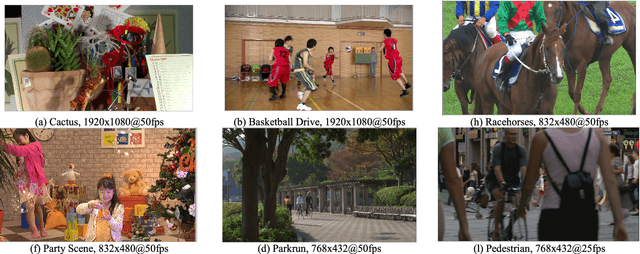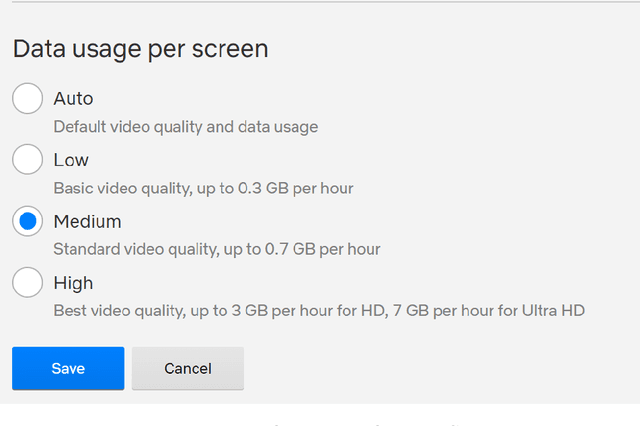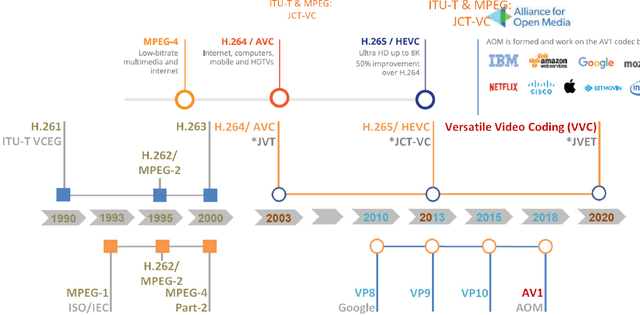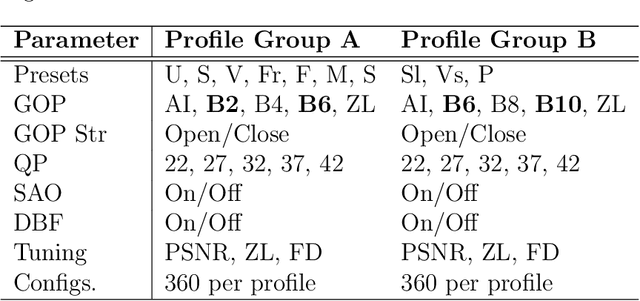Gangadharan Esakki
Adaptive Video Encoding For Different Video Codecs
May 17, 2021



Abstract:By 2022, we expect video traffic to reach 82% of the total internet traffic. Undoubtedly, the abundance of video-driven applications will likely lead internet video traffic percentage to a further increase in the near future, enabled by associate advances in video devices' capabilities. In response to this ever-growing demand, the Alliance for Open Media (AOM) and the Joint Video Experts Team (JVET) have demonstrated strong and renewed interest in developing new video codecs. In the fast-changing video codecs' landscape, there is thus, a genuine need to develop adaptive methods that can be universally applied to different codecs. In this study, we formulate video encoding as a multi-objective optimization process where video quality (as a function of VMAF and PSNR), bitrate demands, and encoding rate (in encoded frames per second) are jointly optimized, going beyond the standard video encoding approaches that focus on rate control targeting specific bandwidths. More specifically, we create a dense video encoding space (offline) and then employ regression to generate forward prediction models for each one of the afore-described optimization objectives, using only Pareto-optimal points. We demonstrate our adaptive video encoding approach that leverages the generated forward prediction models that qualify for real-time adaptation using different codecs (e.g., SVT-AV1 and x265) for a variety of video datasets and resolutions. To motivate our approach and establish the promise for future fast VVC encoders, we also perform a comparative performance evaluation using both subjective and objective metrics and report on bitrate savings among all possible pairs between VVC, SVT-AV1, x265, and VP9 codecs.
* Video codecs, Video signal processing, Video coding, Video compression, Video quality, Video streaming, Adaptive video streaming, Versatile Video Coding, AV1, HEVC
Adaptive Encoding for Constrained Video Delivery in HEVC, VP9, AV1 and VVC Compression Standards and Adaptation to Video Content
Apr 26, 2021



Abstract:The dissertation proposes the use of a multi-objective optimization framework for designing and selecting among enhanced GOP configurations in video compression standards. The proposed methods achieve fine optimization over a set of general modes that include: (i) maximum video quality, (ii) minimum bitrate, (iii) maximum encoding rate (previously minimum encoding time mode) and (iv) can be shown to improve upon the YouTube/Netflix default encoder mode settings over a set of opposing constraints to guarantee satisfactory performance. The dissertation describes the implementation of a codec-agnostic approach using different video coding standards (x265, VP9, AV1) on a wide range of videos derived from different video datasets. The results demonstrate that the optimal encoding parameters obtained from the Pareto front space can provide significant bandwidth savings without sacrificing video quality. This is achieved by the use of effective regression models that allow for the selection of video encoding settings that are jointly optimal in the encoding time, bitrate, and video quality space. The dissertation applies the proposed methods to x265, VP9, AV1 and using new GOP configurations in x265, delivering over 40% of the optimal encodings in two standard reference videos.
 Add to Chrome
Add to Chrome Add to Firefox
Add to Firefox Add to Edge
Add to Edge